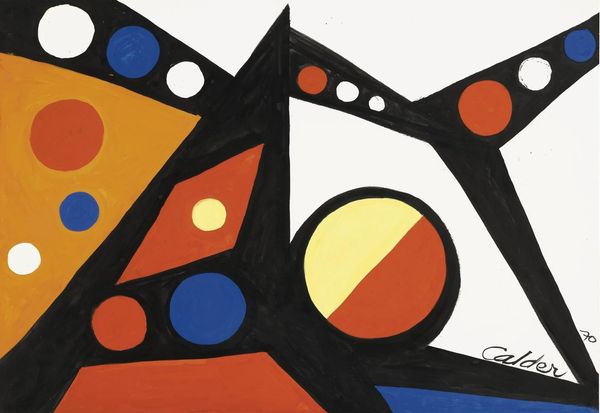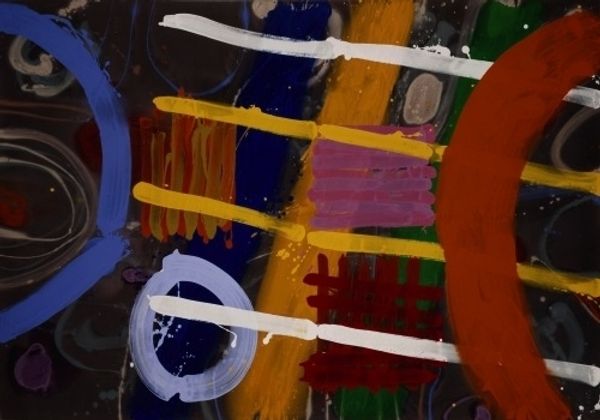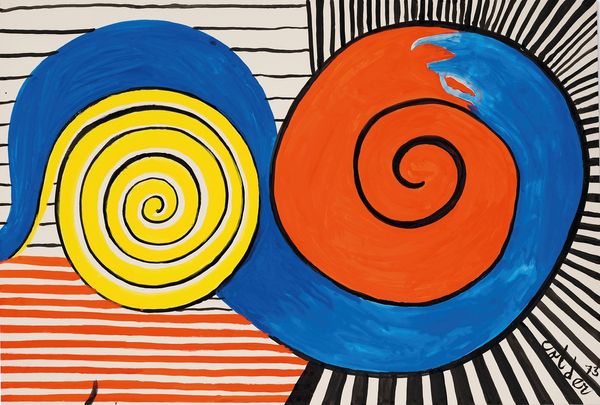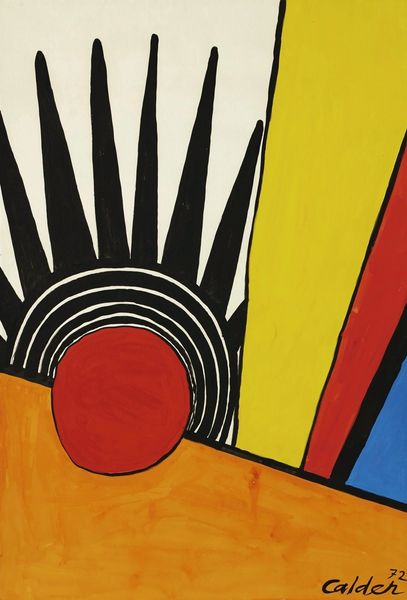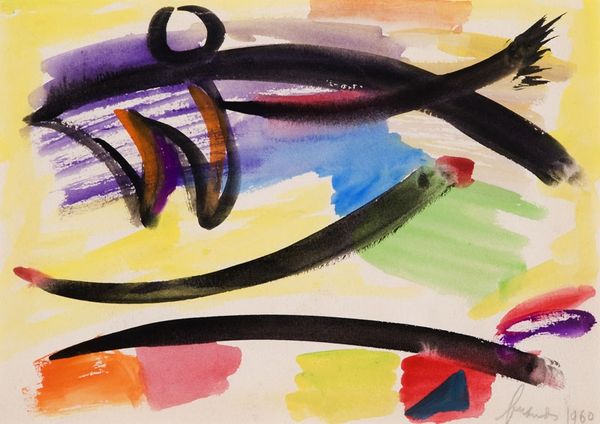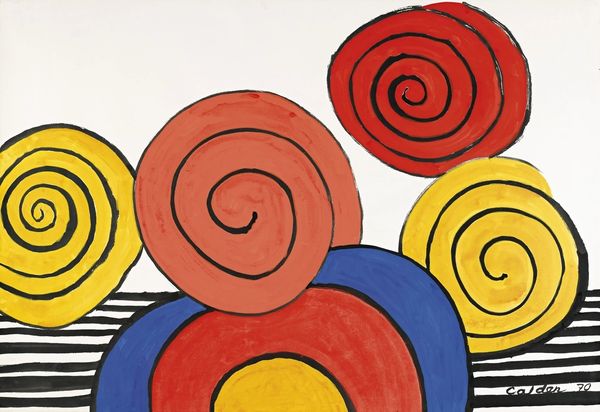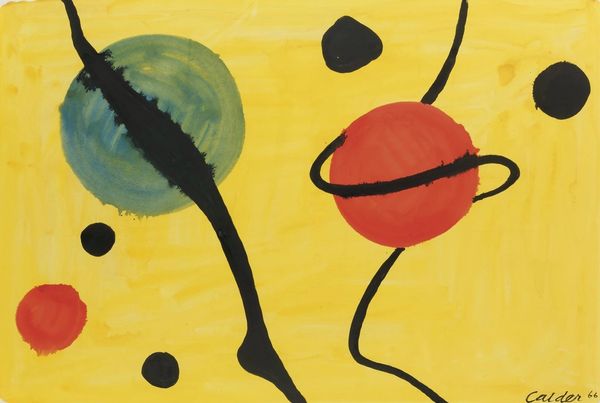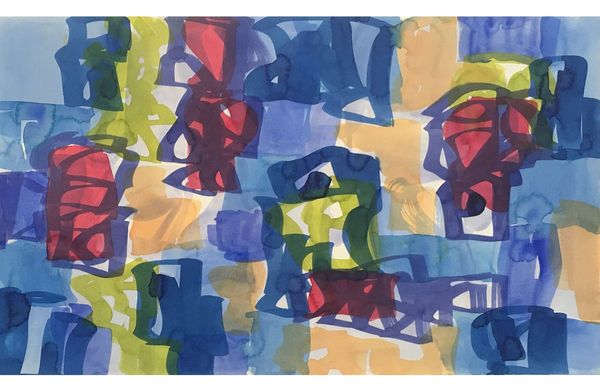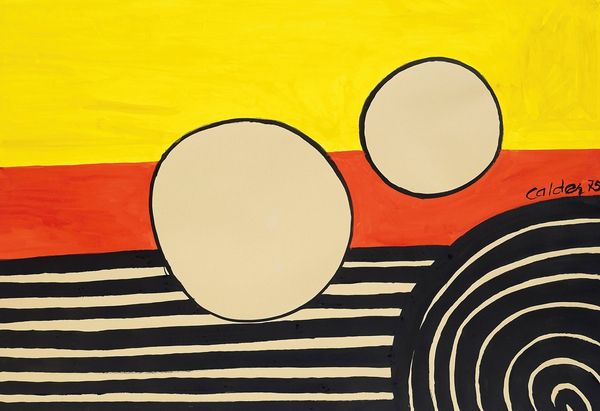
painting, acrylic-paint, installation-art
#
painting
#
graffiti art
#
pop art
#
colour-field-painting
#
acrylic-paint
#
abstract
#
form
#
geometric
#
installation-art
#
pop-art
#
line
#
modernism
Copyright: Modern Artists: Artvee
Curator: Standing before us is Alexander Calder’s "Engulfing," painted in 1966 using acrylic. What strikes you about it? Editor: Initially, the interplay between the vibrant, almost primal, reds, blues, and yellows against that stark white canvas grabs my attention. The crude rendering evokes the immediacy of street art. Curator: It’s interesting you mention that because, although made with acrylic paint, its lineage owes more to engineering. Calder’s earlier mobiles, employing similar visual elements, redefined the scope of art making by incorporating movement and industrial fabrication. Editor: Industrial fabrication? You mean mass production and accessibility? It reads almost as Pop Art. It reminds me of how Warhol elevated mundane commercial objects. Curator: Precisely! We can consider the way Calder embraced these concepts within his artistic practice. In creating works, like this painting, derived from mobile forms, he challenged conventional fine art traditions, moving toward an intersection with aspects of the broader material culture. Editor: But there’s a spontaneity here, isn’t there? The drips, the raw quality of the lines. Is it not a push-pull relationship with total control? Curator: I agree that it evokes a dynamic tension, but that is part of Calder’s method and what gives "Engulfing" its vibrant character. One can really see the process involved in how Calder adapted methods he would normally associate with his larger installations to this picture, as we think about the way colour field painting relies heavily on surface. Editor: Still, it's compelling how he contains so much within seemingly simple shapes and materials. These forms communicate much, and his choice of high-contrast black lines enhances the dynamic feel of this modern, almost chaotic installation. Curator: Absolutely. Examining "Engulfing," as it synthesizes industrial techniques with subjective choices of color and form, it showcases a particularly inventive era of making. Editor: It has given me a renewed appreciation for the dialogue between intention and accident, control and chaos, as essential components of artistic meaning.
Comments
No comments
Be the first to comment and join the conversation on the ultimate creative platform.
